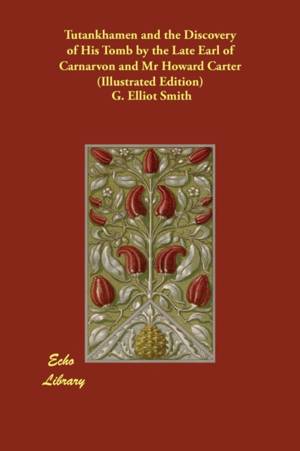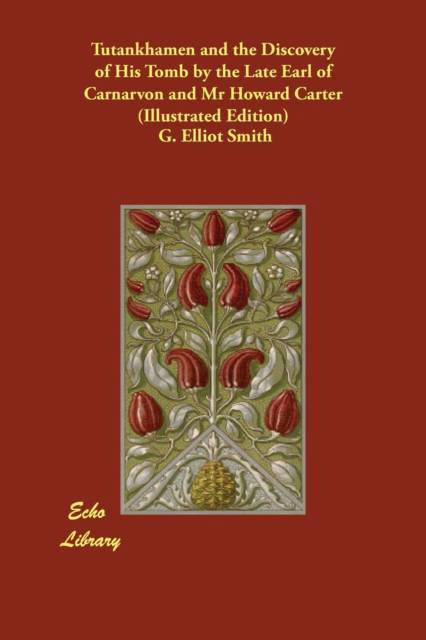
- Afhalen na 1 uur in een winkel met voorraad
- Gratis thuislevering in België vanaf € 30
- Ruim aanbod met 7 miljoen producten
- Afhalen na 1 uur in een winkel met voorraad
- Gratis thuislevering in België vanaf € 30
- Ruim aanbod met 7 miljoen producten
Zoeken
Tutankhamen and the Discovery of His Tomb by the Late Earl of Carnarvon and Mr Howard Carter (Illustrated Edition)
G Elliot Smith
Paperback | Engels
€ 9,95
+ 19 punten
Omschrijving
Sir Grafton Elliot Smith (1871-1937) was an Australian-British anatomist, Egyptologist and proponent of the hyperdiffusionist view of prehistory. An expert on brain anatomy, he was the first to study Egyptian mummies using radiological techniques. He was born in Grafton, NSW and after obtaining a Doctor of Medicine from the University of Sydney in 1895 he received a travelling scholarship and attended St John's College, Cambridge, graduating BA in 1896. Afterwards he catalogued the human brain collection of the British Museum. After gaining an appointment at the Cairo School of Medicine in 1900 he became archaeological advisor to the archaeological survey of Nubia when it was feared plans to construct the Aswan Dam threatened to drown numerous archaeological sites. From 1909-19 he was Professor in anatomy in Manchester and from 1919-37 held the chair of Anatomy at University College, London. He was the leading specialist on the evolution of the brain of his day and many of his ideas on the evolution of the primate brain still form the core of present scholarship. He was the author of a number of books and this work on the discovery of Tutankhamen's Tomb was first published in 1923. Illustrated throughout.
Specificaties
Betrokkenen
- Auteur(s):
- Uitgeverij:
Inhoud
- Aantal bladzijden:
- 64
- Taal:
- Engels
Eigenschappen
- Productcode (EAN):
- 9781406820690
- Verschijningsdatum:
- 29/08/2019
- Uitvoering:
- Paperback
- Formaat:
- Trade paperback (VS)
- Afmetingen:
- 152 mm x 229 mm
- Gewicht:
- 104 g

Alleen bij Standaard Boekhandel
+ 19 punten op je klantenkaart van Standaard Boekhandel
Beoordelingen
We publiceren alleen reviews die voldoen aan de voorwaarden voor reviews. Bekijk onze voorwaarden voor reviews.











